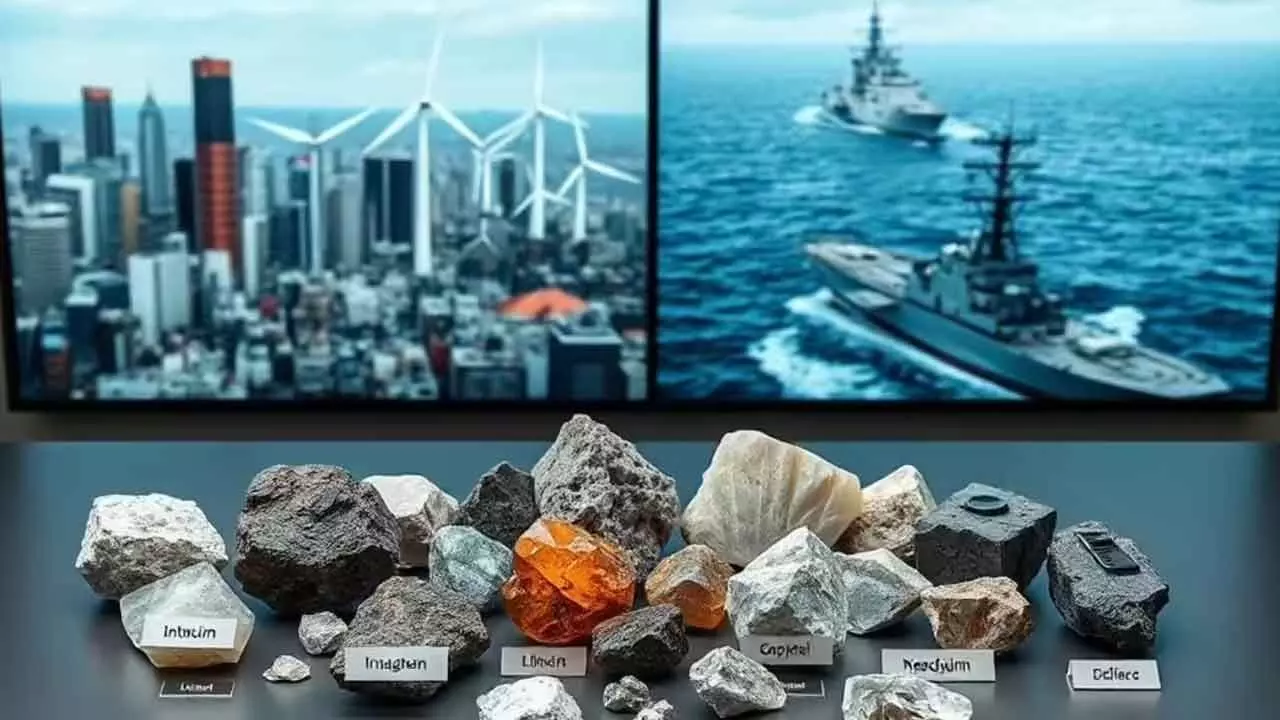The Unseen Hand: How Rare Earth Minerals are Reshaping the Global Power Play
Explore how rare earth minerals are shaping global power dynamics, from China's strategic export controls to Washington's global hunt for supplies. Uncover their vital role in advanced technologies, drone warfare, and the green energy transition, highlighting the urgent need for supply chain diversification
The Unseen Hand: How Rare Earth Minerals are Reshaping the Global Power Play

In the intricate dance of global geopolitics, an often-overlooked group of elements—rare earth minerals—are increasingly dictating the rhythm. These critical materials, indispensable for cutting-edge technologies, have become a focal point of strategic competition, with nations scrambling to secure their supply chains and reduce dependence on dominant players like China.
The ongoing tariff skirmish between Beijing and Washington has cast a stark spotlight on this issue. China, a global powerhouse in rare earth production, has shrewdly leveraged its position by imposing export controls on key elements such as neodymium, dysprosium, and yttrium. These restrictions are a powerful economic weapon, giving China significant leverage in trade negotiations with the United States.
The Power of the Periodic Table
Why are these obscure elements so crucial? Consider neodymium, which, when combined with iron and boron, forms magnets capable of withstanding extreme temperatures up to 2,800 degrees Celsius. These "super-magnets" are the silent workhorses behind a vast array of modern innovations: drones, robots, missiles, aerospace components, defense equipment, electric vehicles, semiconductors, computers, mobile phones, and wind turbines. Dysprosium can even serve as a substitute for neodymium in some applications.
These rare earth magnets boast extraordinary strength, being 12 times more powerful than the ferrite magnets found in common household refrigerators. Their integration into advanced technologies like drones and robots is vital for enhancing torque and speed, leading to improved precision and efficiency. Another impressive contender, samarium cobalt magnets, are eight times stronger than their ferrite counterparts.
Washington's Global Quest for Supply Security
To counter China's formidable dominance in rare and critical earth minerals, Washington has embarked on an aggressive global procurement strategy. From the frozen expanses of the Arctic and Greenland to war-torn Ukraine, the U.S. is actively seeking diverse sources. Remarkably, even amidst its conflict with Russia, Ukraine was pressed into signing a mineral deal with the United States. This proactive approach has seen Washington reduce its rare-earth imports from China from 80% in 2017 to approximately 70% today, a significant, though still reliant, shift.
In a telling sign of this strategic pivot, the U.S. sanctions on India's State-owned Rare Earths Limited, which had been in place for nearly a decade, were swiftly lifted by President Biden shortly before his departure from office. Furthermore, during Prime Minister Narendra Modi's visit to Washington in the previous administration, the US-India 'strategic mineral recovery' initiative was announced, signaling a collaborative effort to jointly mine and process critical minerals.
Drones: A Double-Edged Sword of Innovation
The rare earth mineral saga is intricately linked to advancements in drone technology, a sector where China has made substantial strides, including developing drones capable of transporting goods weighing up to one ton.
This evolution in drone capabilities presents an intriguing alternative to traditional transportation methods and highway development. As concerns mount over large-scale deforestation for road widening projects in ecologically sensitive areas like the Western and Eastern Ghats, the Northeast, and the Himalayas, drone-based transport offers a path to mitigate environmental damage. By preserving forests' carbon sequestration potential, drones can act as a crucial buffer against climate change.
Beyond logistics, drones have also emerged as formidable weapons, as powerfully demonstrated in recent military engagements like Operation Sindoor. These nimble machines, flying at low altitudes to evade radar detection, have proven effective in precision strikes against terrorist infrastructure.
The rapid advancements in drone technology necessitate constant innovation and upgrades in drone electronics for every nation. Early in the conflict, Russian forces successfully jammed Ukrainian drones. In response, Ukraine ingeniously developed cable drones that transmit signals via optic fiber instead of electromagnetic waves, effectively rendering them immune to jamming. Such expertise is also being developed in India, which has been instrumental in dismantling terror infrastructures across the border and hitting air bases deep inside during Operation Sindoor.
Intriguingly, China's own domestic drone manufacturing once faced significant hurdles due to its self-imposed restrictions on rare-earth extraction and separation. These controls even extended to finished products like neodymium-iron-boron magnets, impacting the domestic production of semiconductors, automobiles, and drones. To overcome these challenges, China has since revoked these restrictions.
Following recent actions by armed forces, China has sought assurances from India that imported magnets will not be used for defense manufacturing and will not be re-exported to the U.S. After the Director General of Foreign Trades in India began issuing a certificate for each consignment, the import of these crucial magnets has resumed. This reliance was evident when Maruti Suzuki faced production delays for its e-Vitara and had to seek government permission to import a complete assembly of components from China, circumventing domestic value addition norms.
Diversification: The Imperative for a Green Future
The advancement of green technology is paramount for reducing fossil fuel consumption and mitigating global warming. The International Energy Agency (IEA) has recently issued a stern warning about the concentrated control of critical mineral mining and processing in the hands of a few nations. This concentration not only risks global pricing and supply stability but also poses a direct threat to the transition towards green energy.
Diversifying the global landscape of mining, refining, and processing of these key critical minerals is no longer just an economic consideration; it is an essential geopolitical imperative to prevent crippling supply chain disruptions and ensure a sustainable future for all.

